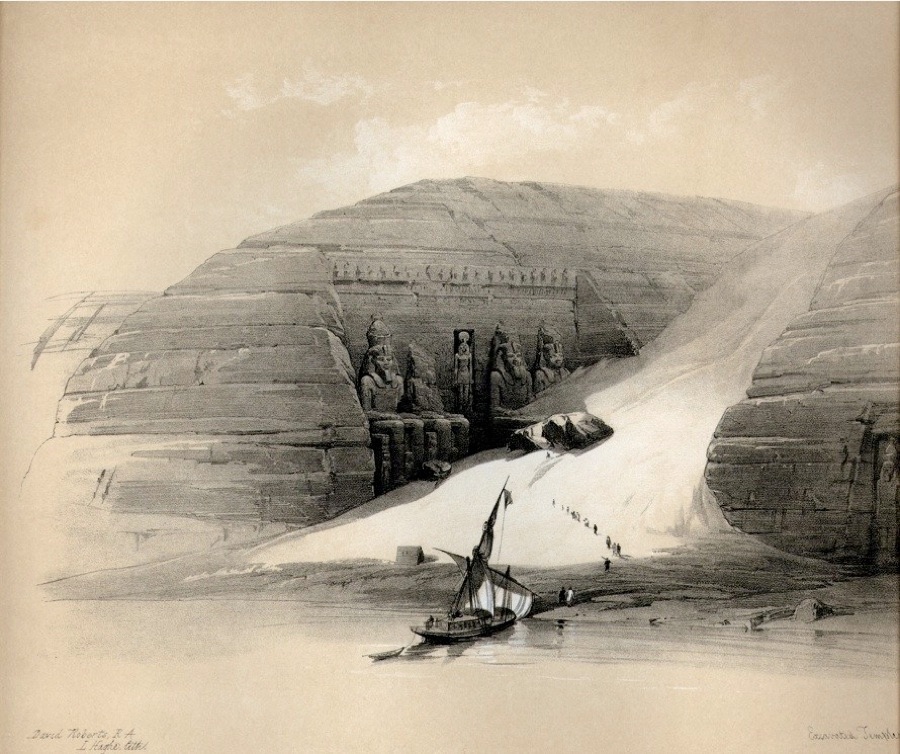THE TEMPLES OF ABOO-SIMBEL, FROM THE NILE.
THE smallest of these Temples, and the nearest to the Nile, was dedicated to Isis, and is excavated about ninety feet into the rock. It was, during many ages, the only one known there: for the accumulations of sand had so concealed the Great Temple of Osiris that it remained undiscovered till Burckhardt visited Nubia, in 1813. In his “Travels” he says: – “ When we reached the top of the mountain, I left my guide with the camels, and descended an almost perpendicular cleft, choked with sand, to view the Temple of Ebsambol, of which I had heard many magnificent descriptions. There is no road to this Temple, which stands just over the river, and is entirely cut out of the rocky side of the mountain; it is in complete preservation. In front of the entrance are six colossal figures, that measure from the ground to the knee six feet and a half.” After describing the interior, he adds, – “Having, as I supposed, seen all the antiquities of Ebsambol, I was about to ascend the sandy side of the mountain by the same way I had descended, when, having luckily turned more to the southward, I fell in with what is still visible of four immense colossal statues, cut out of the rock, at a distance of about two hundred yards from the Temple: they are now almost entirely buried beneath the sands. The entire head and part of the breast and arms of one of the statues are yet above the surface; the head of the next is broken off, and the bonnets of the other two only appear. It is difficult to determine whether these statues are in a sitting or a standing posture.” After describing the beauty of the head, he states, – ”On the wall of the rock, in the centre of the four statues, is a figure of the hawk-headed Osiris, surmounted by a globe; beneath which, I suspect, could the sand be cleared away, a vast temple would be discovered.” On his return to Cairo he informed Belzoni of what he had seen at Aboo-Simbel; and this indefatigable traveller removed enough of the sand to effect an entrance, and disclosed one of the most perfect and extraordinary works of the ancient Egyptians.


